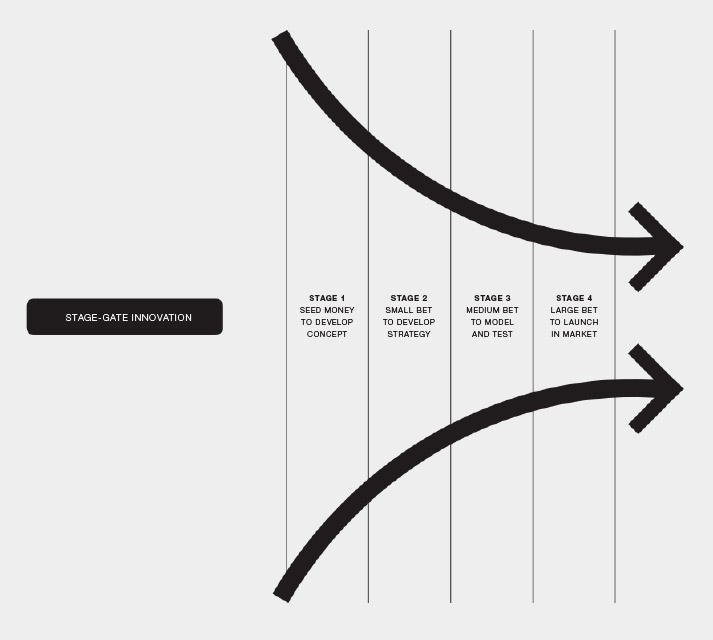Steal This Idea: The innovation funnel
The biggest hurdle to innovation is the corporate longing for certainty about costs, market size, revenues, profits, and other quantities, all of which can’t be known when an idea is new. Ironically, there seems to be no hurdle to investing in dying businesses, decaying strategies, and shrinking markets, all of which can be seen without a crystal ball. It seems we prefer the devil we know.
The best way to get around the devil—and all his advocates—is to allow the company to crank up its confidence stage by stage. Luckily, there’s already a workable model for this process: stage-gate investing. It was pioneered by oil entrepreneurs who lacked certainty about which wells would produce black gold and which would fizzle. It was further developed by venture capitalists who lacked certainty about how trends, markets, and people would combine to produce profits. There are four funding stages in this process:
With stage-gate investing, an idea is vetted stage by stage using a kind of natural selection, so that big bets are only made after the idea has been largely de-risked. Stage-gate investing works best when you have a portfolio of innovations in the pipeline. The vetting process then acts a filtration system that separates the great ideas from those that are underpowered, short-sighted, unstrategic, or off-brand. It creates an innovation funnel that lets you vet new concepts step by step, reducing the fear of failure at each step.


